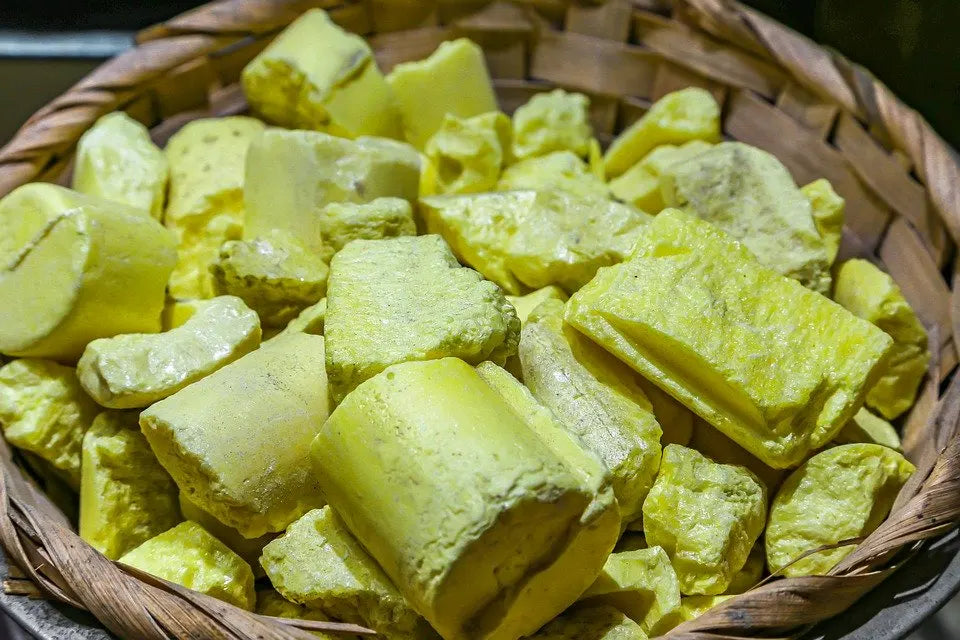All about Sulphur

Sulphur (S) (the American spelling is "sulfur") is a bright yellow element in abundance on earth. In its pure form it is a crystalline but rather powdery solid at normal temperatures. In ancient times it was called "brimstone" (or "burning stone") and burns with a characteristic blueish flame, giving off the toxic gases sulphur dioxide and sulphur trioxide (SO2 and SO3).
In plants, most of the sulphur absorbed is used for making amino acids and then proteins. However, it is also used in an enzyme which is needed to make chlorophyll. It is also needed to make plant oils including many essential oils.
Sulphur is immobile once used in a plant and cannot be relocated and reused like some of the other nutrients. If a deficiency occurs, the signs will appear in the new growth first as the leaves will be a pale green. As the deficiency progresses, the leaf veins will begin to turn yellow. This will eventually spread to between the veins as well. Growth is slow and yields will be very noticeably affected. Because sulphur plays a role in oil production and some flavonoids, the quality of the produce will almost certainly be reduced as well.
If there is an excess of sulphur, the plant growth may slow down. Leaves will usually become dark green. The tips and edges of the leaves may burn.

